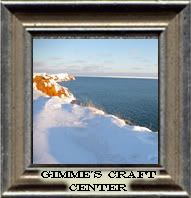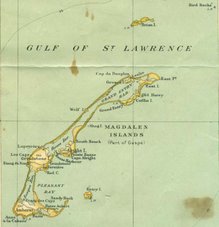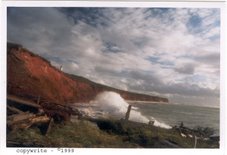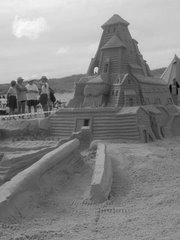Great Ecotourism Destinations: Brion Island
Ecotourism is the new wave in vacation hotspots around the world. There are many who would not even consider the traditional vacation anymore, but rather have the exercise and learn as much as possible about areas that they have never been to. Brion Island, part of the Magdalen Islands, Quebec, Canada is one such place, but it is one of a few places which has limited access - only one thousand persons a year, including the guides for each separate trip they make. Needless to say, the limited reservations are taken almost before they can be given. Most of the reservations are taken as a first come, first serve reservation.
Going to the Magdalen Island s includes a five-hour ferry trip across the Gulf of Saint Lawrence. On arrival, accommodations are taken. On the correct date, the ecotourist presents themself at the wharf in Grosse Isle North, on the far northern eastern end of the islands. There is now a kiosk in place for the ecotourists, where they can pay to land on the island. They board upon either zodiacs or fishing boats, depending on whom they have their reservations and sail the hour voyage to the island. Usually, the zodiacs will take a tour around the island first, while the tour guide explains the life that took place on the island and its history and processes as to how Brion became Quebec’s twentieth Ecological Reserve. There is always a stop at the Seal Rocks on the eastern end of Brion and watch the young seal cavorting amongst themselves between the rocks while the older, more majestic Harbour and Hood seal lounge on
s includes a five-hour ferry trip across the Gulf of Saint Lawrence. On arrival, accommodations are taken. On the correct date, the ecotourist presents themself at the wharf in Grosse Isle North, on the far northern eastern end of the islands. There is now a kiosk in place for the ecotourists, where they can pay to land on the island. They board upon either zodiacs or fishing boats, depending on whom they have their reservations and sail the hour voyage to the island. Usually, the zodiacs will take a tour around the island first, while the tour guide explains the life that took place on the island and its history and processes as to how Brion became Quebec’s twentieth Ecological Reserve. There is always a stop at the Seal Rocks on the eastern end of Brion and watch the young seal cavorting amongst themselves between the rocks while the older, more majestic Harbour and Hood seal lounge on the tops of the jagged edges of rock, sunning themselves in the beautiful weather. A full explanation is given for the reasons that the eastern tip of Brion is left entirely to nature and no human intervention is allowed. Only the occasional biological study group may set a foot on this section.
the tops of the jagged edges of rock, sunning themselves in the beautiful weather. A full explanation is given for the reasons that the eastern tip of Brion is left entirely to nature and no human intervention is allowed. Only the occasional biological study group may set a foot on this section.
As the tour continues, the towering cliffs on the north side are examined at close range. The marine bird populations that nest on the capes are intriguing to watch and are a delight for bird-watchers. The razorbill that looks like miniature penguins, and the Atlantic Puffins in all their splendor, can often be approached while they are sitting on the water, because they are sometimes too heavy from feeding to lift off. There are Large Cormorants that are as black as can be imagined and blacked-legged Kittiwakes with their interesting calls. The birds are so numerous that when in flight, they cover the sky and block out the sun. The capes on the north side of Brion are also an excellent opportunity to view the stages of the evolution of the islands and of the Saint Lawrence basin because the eons are clearly etched into the rock walls. As the tour moves on, the caves can be looked at and how the many shipwrecks saw their last days on the rocks of Brion Island. The sight becomes living history of the evolution of navigation and its reasons for being.
The zodiac part of the tour ends, when the boat rounds the western end of t he island, except for the return voyage to the wharf in Grosse Isle. Here the passengers disembark beside an old fishing wharf, that is now nothing more than a hazard, and they walk up the hill to the Brion Island Interpretation Center, which was the cookhouse for the fishermen, who would come to the island in the early spring and stay until late fall, harvesting the fruitful waters, back in the 1950's and 60's. A tour of the cook house and the surrounding outbuildings - the foundation of the saline or salting factory, the boat-haulers building, the fishermen’s camps, the outhouses are all part of the tour. Up over the savage campground hill to examine the now fully automated lighthouse and understand why lighthouse-keeper spent many nights in lonely watch for the ships that would pass in the night, hoping that it wouldn’t be the night that one would come up on the rocks. A climb down onto the sandy beach for a couple of hours of swimming and relaxing is made before the return to civilization.
he island, except for the return voyage to the wharf in Grosse Isle. Here the passengers disembark beside an old fishing wharf, that is now nothing more than a hazard, and they walk up the hill to the Brion Island Interpretation Center, which was the cookhouse for the fishermen, who would come to the island in the early spring and stay until late fall, harvesting the fruitful waters, back in the 1950's and 60's. A tour of the cook house and the surrounding outbuildings - the foundation of the saline or salting factory, the boat-haulers building, the fishermen’s camps, the outhouses are all part of the tour. Up over the savage campground hill to examine the now fully automated lighthouse and understand why lighthouse-keeper spent many nights in lonely watch for the ships that would pass in the night, hoping that it wouldn’t be the night that one would come up on the rocks. A climb down onto the sandy beach for a couple of hours of swimming and relaxing is made before the return to civilization.
As a separate part of the tour there is the long trek to the area known as the deserted Dingwell property, house and the Saddle. This trip is done on foot over the top of the northern capes, up hills and down in valleys, for a five-hour hike, which is not recommended for the physically weak. The trip can only be made with a registered Brion Island tour guide, who is in contact with the mainland and is trained in life saving techniques. The guide continues the tour with more comprehensive information of the peoples of Brion Island, how they came to be there, how they lived in such isolation and the reasons for their departure, since the island once had a thriving, rich culture who cultivated its fertile soil. A more in-depth study of the shipwrecks is given and local folk-lore of the days and nights that passed on this island. More bird-watching is possible from the tops of the capes.
By the time the e cotourists are ready to board the zodiacs or fishing boats upon which they came, they find they are weary and completely convinced that it was worth the trouble and expense to get to Brion Island. The photo opportunities were stunning to say the least. The guided tours were comprehensive in the two official Canadian languages. The presentation of the information was colorful and intimate and the people, whom they met friendly and helpful to a fault sometimes, making the trip an eventful one, but as safe as possible. The sail back to Grosse Isle is usually quiet. They pass the navigation buoys that the ships in the shipping lanes use while going to and from the St. Lawrence river, and see the occasional Atlantic dolphin or Minke whale. The ecotourists are reflective of what they came for and what they were returning with.
cotourists are ready to board the zodiacs or fishing boats upon which they came, they find they are weary and completely convinced that it was worth the trouble and expense to get to Brion Island. The photo opportunities were stunning to say the least. The guided tours were comprehensive in the two official Canadian languages. The presentation of the information was colorful and intimate and the people, whom they met friendly and helpful to a fault sometimes, making the trip an eventful one, but as safe as possible. The sail back to Grosse Isle is usually quiet. They pass the navigation buoys that the ships in the shipping lanes use while going to and from the St. Lawrence river, and see the occasional Atlantic dolphin or Minke whale. The ecotourists are reflective of what they came for and what they were returning with.
For more information about Great Ecotourism Destinations : Brion Island, see http://www.excursionsenmer.com
Going to the Magdalen Island
 s includes a five-hour ferry trip across the Gulf of Saint Lawrence. On arrival, accommodations are taken. On the correct date, the ecotourist presents themself at the wharf in Grosse Isle North, on the far northern eastern end of the islands. There is now a kiosk in place for the ecotourists, where they can pay to land on the island. They board upon either zodiacs or fishing boats, depending on whom they have their reservations and sail the hour voyage to the island. Usually, the zodiacs will take a tour around the island first, while the tour guide explains the life that took place on the island and its history and processes as to how Brion became Quebec’s twentieth Ecological Reserve. There is always a stop at the Seal Rocks on the eastern end of Brion and watch the young seal cavorting amongst themselves between the rocks while the older, more majestic Harbour and Hood seal lounge on
s includes a five-hour ferry trip across the Gulf of Saint Lawrence. On arrival, accommodations are taken. On the correct date, the ecotourist presents themself at the wharf in Grosse Isle North, on the far northern eastern end of the islands. There is now a kiosk in place for the ecotourists, where they can pay to land on the island. They board upon either zodiacs or fishing boats, depending on whom they have their reservations and sail the hour voyage to the island. Usually, the zodiacs will take a tour around the island first, while the tour guide explains the life that took place on the island and its history and processes as to how Brion became Quebec’s twentieth Ecological Reserve. There is always a stop at the Seal Rocks on the eastern end of Brion and watch the young seal cavorting amongst themselves between the rocks while the older, more majestic Harbour and Hood seal lounge on the tops of the jagged edges of rock, sunning themselves in the beautiful weather. A full explanation is given for the reasons that the eastern tip of Brion is left entirely to nature and no human intervention is allowed. Only the occasional biological study group may set a foot on this section.
the tops of the jagged edges of rock, sunning themselves in the beautiful weather. A full explanation is given for the reasons that the eastern tip of Brion is left entirely to nature and no human intervention is allowed. Only the occasional biological study group may set a foot on this section.As the tour continues, the towering cliffs on the north side are examined at close range. The marine bird populations that nest on the capes are intriguing to watch and are a delight for bird-watchers. The razorbill that looks like miniature penguins, and the Atlantic Puffins in all their splendor, can often be approached while they are sitting on the water, because they are sometimes too heavy from feeding to lift off. There are Large Cormorants that are as black as can be imagined and blacked-legged Kittiwakes with their interesting calls. The birds are so numerous that when in flight, they cover the sky and block out the sun. The capes on the north side of Brion are also an excellent opportunity to view the stages of the evolution of the islands and of the Saint Lawrence basin because the eons are clearly etched into the rock walls. As the tour moves on, the caves can be looked at and how the many shipwrecks saw their last days on the rocks of Brion Island. The sight becomes living history of the evolution of navigation and its reasons for being.
The zodiac part of the tour ends, when the boat rounds the western end of t
 he island, except for the return voyage to the wharf in Grosse Isle. Here the passengers disembark beside an old fishing wharf, that is now nothing more than a hazard, and they walk up the hill to the Brion Island Interpretation Center, which was the cookhouse for the fishermen, who would come to the island in the early spring and stay until late fall, harvesting the fruitful waters, back in the 1950's and 60's. A tour of the cook house and the surrounding outbuildings - the foundation of the saline or salting factory, the boat-haulers building, the fishermen’s camps, the outhouses are all part of the tour. Up over the savage campground hill to examine the now fully automated lighthouse and understand why lighthouse-keeper spent many nights in lonely watch for the ships that would pass in the night, hoping that it wouldn’t be the night that one would come up on the rocks. A climb down onto the sandy beach for a couple of hours of swimming and relaxing is made before the return to civilization.
he island, except for the return voyage to the wharf in Grosse Isle. Here the passengers disembark beside an old fishing wharf, that is now nothing more than a hazard, and they walk up the hill to the Brion Island Interpretation Center, which was the cookhouse for the fishermen, who would come to the island in the early spring and stay until late fall, harvesting the fruitful waters, back in the 1950's and 60's. A tour of the cook house and the surrounding outbuildings - the foundation of the saline or salting factory, the boat-haulers building, the fishermen’s camps, the outhouses are all part of the tour. Up over the savage campground hill to examine the now fully automated lighthouse and understand why lighthouse-keeper spent many nights in lonely watch for the ships that would pass in the night, hoping that it wouldn’t be the night that one would come up on the rocks. A climb down onto the sandy beach for a couple of hours of swimming and relaxing is made before the return to civilization.As a separate part of the tour there is the long trek to the area known as the deserted Dingwell property, house and the Saddle. This trip is done on foot over the top of the northern capes, up hills and down in valleys, for a five-hour hike, which is not recommended for the physically weak. The trip can only be made with a registered Brion Island tour guide, who is in contact with the mainland and is trained in life saving techniques. The guide continues the tour with more comprehensive information of the peoples of Brion Island, how they came to be there, how they lived in such isolation and the reasons for their departure, since the island once had a thriving, rich culture who cultivated its fertile soil. A more in-depth study of the shipwrecks is given and local folk-lore of the days and nights that passed on this island. More bird-watching is possible from the tops of the capes.
By the time the e
 cotourists are ready to board the zodiacs or fishing boats upon which they came, they find they are weary and completely convinced that it was worth the trouble and expense to get to Brion Island. The photo opportunities were stunning to say the least. The guided tours were comprehensive in the two official Canadian languages. The presentation of the information was colorful and intimate and the people, whom they met friendly and helpful to a fault sometimes, making the trip an eventful one, but as safe as possible. The sail back to Grosse Isle is usually quiet. They pass the navigation buoys that the ships in the shipping lanes use while going to and from the St. Lawrence river, and see the occasional Atlantic dolphin or Minke whale. The ecotourists are reflective of what they came for and what they were returning with.
cotourists are ready to board the zodiacs or fishing boats upon which they came, they find they are weary and completely convinced that it was worth the trouble and expense to get to Brion Island. The photo opportunities were stunning to say the least. The guided tours were comprehensive in the two official Canadian languages. The presentation of the information was colorful and intimate and the people, whom they met friendly and helpful to a fault sometimes, making the trip an eventful one, but as safe as possible. The sail back to Grosse Isle is usually quiet. They pass the navigation buoys that the ships in the shipping lanes use while going to and from the St. Lawrence river, and see the occasional Atlantic dolphin or Minke whale. The ecotourists are reflective of what they came for and what they were returning with.For more information about Great Ecotourism Destinations : Brion Island, see http://www.excursionsenmer.com















1 comment:
I am so looking forward to visiting in the not so far away future. You truly won me over with this article. It's brightened a less than glorious day.
Post a Comment